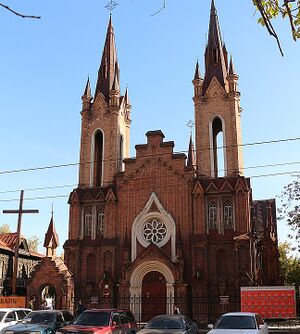Transfiguration
 From Conservapedia
From Conservapedia 

The Transfiguration refers to a change in form by Jesus early in his ministry, as witnessed by Peter, John the Apostle, and James. This is the subject of much artwork, including a famous painting by Raphael.[1]
The Transfiguration is described in multiple Gospels, Matthew 17:1–8, Mark 9:2–8, Luke 9:28–36, and also 2 Peter 1:16–18. The Gospel of John may allude to it at John 1:14 but omits a direct description of it despite how John was an eyewitness.
Thomas Aquinas considered it to be among the greatest of all signs or miracles, while its omission in the Gospel of John may suggest that he did not attach high significance to it. It is also possible that John omitted it to avoid duplication with the other Gospels, or to adhere to his style of avoiding or downplaying references to himself. It is further possible that John simply continued to abide by instructions not to publicize the event. See Luke 9:36: "The disciples kept this to themselves and did not tell anyone at that time what they had seen."[2]
One hypothesis, considered heretical by some, is that Jesus did not realize his own divinity until the Transfiguration.
Independent confirmation[edit]
The Transfiguration is independently confirmed by 2Peter 1:16-19 .
Peter's statement[edit]
It is understood that Peter made the statement that he said to Jesus at the transfiguration (Luke 9:33 ) because he was both tired and unsure of what to say.[3]
References[edit]
- ↑ https://www.raphaelpaintings.org/the-transfiguration.jsp
- ↑ NIV.
- ↑ Greg Laurie (January 17, 2014). Spiritual Slumber. The Christian Post. Retrieved on March 9, 2020.
↧ Download as ZWI file | Last modified: 02/11/2023 19:57:48 | 75 views
☰ Source: https://www.conservapedia.com/Transfiguration | License: CC BY-SA 3.0
 ZWI signed:
ZWI signed: KSF
KSF